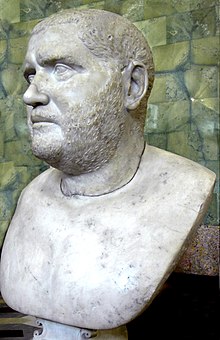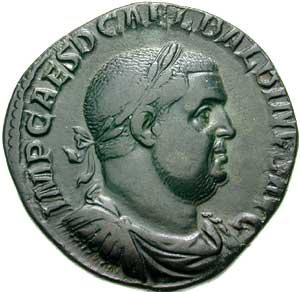| Balbinus | |||||||||
|---|---|---|---|---|---|---|---|---|---|
 Bust, Hermitage Museum | |||||||||
| Roman emperor | |||||||||
| Reign | April/May – July/August 238 [1] | ||||||||
| Predecessor | Gordian I and II | ||||||||
| Successor | Gordian III | ||||||||
| Co-emperor | Pupienus | ||||||||
| Rival | Maximinus (until June) | ||||||||
| Born | c. 178 [2] | ||||||||
| Died | 238 (aged approx. 60) Rome, Italy | ||||||||
| |||||||||
| Part of a series on Roman imperial dynasties |
| Year of the Six Emperors |
|---|
| AD 238 |
|
Decimus Caelius Calvinus Balbinus [3] (died 238 AD) was Roman emperor with Pupienus for three months in 238, the Year of the Six Emperors.


